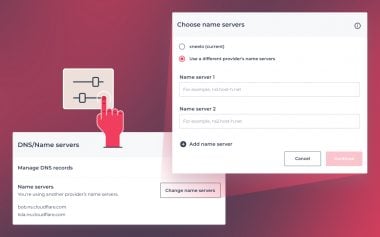Note: We’ve discontinued our Fastly CDN offering. This article remains available for informational purposes. If you’re looking to improve website performance, we’ve developed a local Cache feature within our Web Accelerator performance suite to help reduce page load times.
With xneelo’s Content Delivery Network (CDN) tool customers can improve their website loading times with just one click in their Control Panel. Other premium benefits include faster streaming, protection against DDoS attacks and malicious traffic, and reliable performance.
A CDN works by storing and delivering your website’s content, like images and web pages, from servers located all around the world. When a visitor comes to your site, the CDN will find the server closest to them, and pull the content from that location.
A CDN is great at improving loading times due to slow-loading content, but it has other far reaching benefits as well. A CDN can reduce latency, reduce network congestion, and even prevent unforeseen downtime.
In this post, we’ll look at some website issues that a CDN can help solve.
Latency
Latency is the time that elapses when a visitor clicks on your content and that request is sent to the server, to when the content is sent back. If this time delay is too long – if a video or image takes too long to load for example, it can cause a bad user experience.
A CDN helps to reduce latency by caching (temporarily storing) content closer to your user’s location, reducing the distance that data needs to travel.
Network congestion
Network congestion is caused when a network can’t handle the amount of traffic it’s receiving, causing data packets to become delayed or lost and slowing down content delivery to your website visitors. Let’s say your online store had a sale, and received more website visitors than your traffic quota could handle. As in the case with latency, a CDN can reduce network congestion by delivering content from the nearest server, reducing the distance data packets need to travel. So while your IT team works on increasing your traffic allowance, your visitors would still be able to enjoy their shopping experience.
Downtime
Downtime occurs when the server hosting your website and content is unavailable, preventing your visitors from accessing your content. While this is a rare occurrence, in unexpected circumstances a CDN could help alleviate the disruption caused by downtime by caching content on multiple servers and serving it from the nearest available server.
Buffering (more common)
CDNs can help to deliver high-quality video and audio content worldwide, even during peak usage times, without buffering or delays. This is because media is one of the many forms of content that can be stored and delivered across multiple servers. A recording artist, for example, would have numerous videos on their website. Slow-loading videos could deter visitors from staying.
Page loading times (more common)
CDNs are most known for improving website page speed. It does this by utilising caching to decrease the loading speed of your content, ensuring visitors enjoy consistent and reliable load times no matter where they are in the world. For small business websites competing for the attention of customers, the importance of this cannot be overstated.
We previously partnered with Fastly to offer a CDN solution. While this service is no longer available, we now offer a Web Accelerator tool designed to enhance load times through caching.
Want to read more on this topic? See how a CDN can benefit your small business website here.












